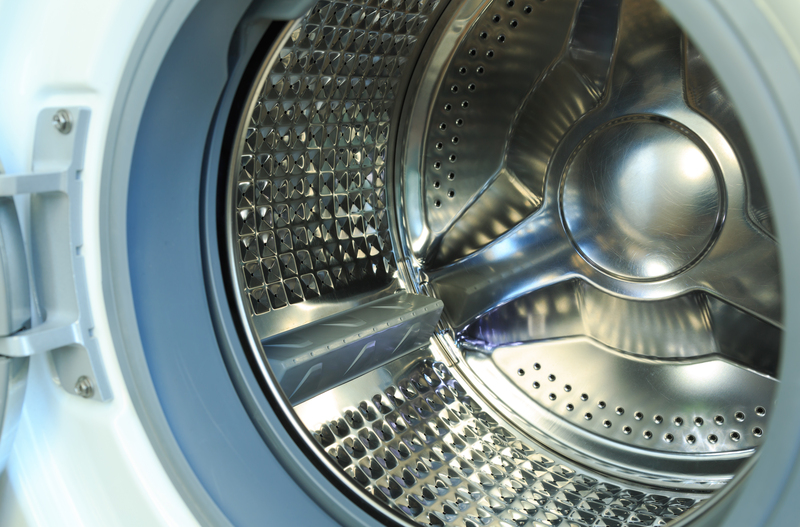Say Hello to a Fresher Home: Tips to Remove Damp Odors
Posted on 20/06/2025
Say Hello to a Fresher Home: Tips to Remove Damp Odors
Are you tired of musty smells in your living room, bedroom, or basement? Damp odors not only make your home less inviting but can also indicate underlying problems with moisture, mildew, or even mold growth. Getting rid of damp odors is critical for maintaining a healthy indoor environment. If you're searching for comprehensive guidance on how to eliminate musty house smells and create a fresher home, you're in the right place.
This in-depth article will explore effective tips to remove damp odors using natural solutions, everyday habits, and preventive strategies. Say goodbye to musty stench and discover a new level of home freshness!
What Causes Damp Odors in the Home?
Understanding the root causes behind damp and musty odors is essential before applying any solution. Damp smells are often an indicator that moisture is present somewhere in your home, which can lead to mold, mildew, and even structural damage if left unchecked.
Common Sources of Damp Odors:
- Leaking pipes or roofs
- High humidity levels, often found in basements, bathrooms, and kitchens
- Insufficient ventilation in closed spaces
- Carpets or upholstery retaining water after spills
- Condensation on windows and cold walls
- Mold or mildew growth on surfaces
Addressing the source is the first step in eliminating musty house smells. Otherwise, even the best deodorizers will only offer temporary relief.

How to Identify the Source of Damp Odors
Before jumping into cleaning, it's vital to pinpoint the exact source of the moisture or mustiness in your home. Here's how you can trace the culprit:
Inspection Checklist
- Check for visible mold in damp corners, under sinks, and at the base of walls.
- Sniff around rooms to pinpoint where the smell is strongest.
- Look for water stains on ceilings, walls, or flooring.
- Touch carpets and furniture for dampness.
- Use a hygrometer to measure the humidity level inside your rooms (above 60% can encourage mold growth).
Once you find the problem area, you can focus on targeted solutions for lasting freshness.
Top Tips to Remove Damp Odors and Musty Smells
1. Improve Air Circulation
Good airflow is essential for preventing and removing damp smells. Here's how to enhance ventilation throughout your home:
- Open windows and doors regularly, even in winter, to let fresh air in.
- Install exhaust fans in bathrooms, kitchens, or basement areas.
- Use ceiling or portable fans to keep air moving, especially in humid rooms.
- Avoid blocking air vents with furniture or curtains.
2. Invest in a Dehumidifier
A dedicated dehumidifier can work wonders in removing excess moisture from the air, thereby reducing the likelihood of musty odors and mold. Choose a unit suitable for your room's square footage for optimal results.
Benefits of using a dehumidifier:- Helps keep relative humidity below 60%, which discourages mold growth.
- Reduces musty smells and creates a fresher living space.
- Improves respiratory health for those with allergies or asthma.
3. Fix Leaks and Water Intrusion Promptly
If you notice any leaks--however minor--in your plumbing, ceiling, or roof, address them immediately. Lingering water leads to persistent damp odors and potential damage. Inspect faucets, pipes, and gutters and repair or seal them as needed.
4. Clean and Disinfect Mold-Prone Areas
Regular cleaning is essential for eliminating musty smells. Focus on rooms with high humidity and areas that rarely receive sunlight.
- Use white vinegar: Spray undiluted vinegar onto moldy surfaces. Let it sit for an hour, then scrub and wipe clean.
- Apply baking soda: Sprinkle onto carpets or upholstery to neutralize odors. Vacuum after a few hours.
- Hydrogen peroxide: A 3% solution can safely clean bathroom grout and tile and kill mold spores.
- For deep stains or persistent mold, consider hiring a professional remediation service.
5. Wash and Dry Soft Furnishings
Cushions, curtains, bed linens, and especially carpets can absorb and harbor damp odors.
- Launder washable fabrics with hot water and a cup of white vinegar or baking soda.
- If possible, dry items outdoors in sunshine for added freshness.
- Use a carpet cleaning machine or hire professionals for wall-to-wall carpets.
- Treat mattresses with a sprinkle of baking soda, followed by vacuuming.
6. Natural Odor Absorbers
Several household items can help absorb and neutralize musty smells:
- Baking soda: Place open containers around the home, closets, or inside wardrobes.
- Activated charcoal: Specially designed charcoal pouches can work wonders for long-lasting freshness.
- Coffee grounds: Place biodegradable bags filled with fresh grounds in musty spots. They both mask and absorb odors.
- Cat litter: Unused, unscented litter absorbs moisture and can reduce odors in closets or storage spaces.
7. Use Essential Oil Diffusers
For a natural and pleasant scent, add a few drops of essential oils (like tea tree, eucalyptus, or lavender) to your ultrasonic diffuser or homemade spray. These not only mask but may also help kill airborne mold spores thanks to their antibacterial and antifungal properties.
8. Deep Clean Drains and Waste Pipes
Often, damp odors can originate from kitchen or bathroom drains.
- Pour a mix of baking soda and white vinegar down the drain, leave for 10 minutes, then rinse with hot water.
- Use enzyme-based cleaners to break down organic buildup inside pipes.
Long-Term Strategies to Prevent Damp Odors
1. Maintain Proper Home Insulation
A well-insulated home is less prone to condensation and cold spots that can attract moisture. Ensuring that your walls, attic, and floors are properly insulated will help regulate temperature and reduce humidity.
2. Regular Maintenance
- Inspect roofs, gutters, and downspouts for blockages or leaks every season.
- Seal any cracks in exterior walls or foundations.
- Check around windows and doors for airtight seals.
3. Use Moisture-Resistant Materials
Consider replacing old carpets with vinyl, tile, or laminate flooring in damp-prone areas. Choose mold-resistant paints and finishes for bathrooms and basements.
4. Control Indoor Plants
While houseplants can purify the air, overwatering may increase humidity levels and contribute to musty odors. Make sure plant pots have adequate drainage and avoid saturating the soil.
Bonus: Quick Fixes to Make Your Home Smell Fresh Instantly
- Place dryer sheets in drawers or under cushions as a temporary fix.
- Boil a pot of water with lemon peels, rosemary, or cinnamon sticks to infuse your space with a natural scent.
- Use air purifiers equipped with HEPA and activated carbon filters for extra odor removal power.
- Spritz a light homemade air freshener (equal parts water and vinegar, with 10 drops of your favorite essential oil) throughout the room.
Why Removing Damp Odors is About More Than Just Smell
Damp or musty odors can be a sign of hidden health hazards. Mold exposure has been linked to allergy symptoms, respiratory issues, and irritation of the eyes, nose, and throat. In severe cases, mold and dampness can also compromise the structural integrity of your home. Addressing unpleasant odors promptly helps protect both your well-being and investment.

Frequently Asked Questions About Removing Damp Odors
Can air fresheners eliminate musty, damp smells for good?
Air fresheners only mask odors temporarily. The key to permanent odor removal is eliminating the source of moisture and thoroughly cleaning affected areas.
How long does it take to remove damp odors from a room?
It depends on the extent of the problem. Minor dampness or closed-up odors may disappear after a day or two of ventilation and cleaning. Persistent moisture or mold might require several deep cleanings and dehumidification over a week or more.
Will a dehumidifier get rid of all musty smells?
Dehumidifiers effectively reduce humidity and hinder mold growth, which removes the conditions that cause musty odors. However, you still need to clean any existing mold or mildew for complete removal.
Are musty odors dangerous?
While a mild musty smell itself isn't harmful, it may signal the presence of mold spores, which can trigger allergies, asthma, or illnesses, especially in sensitive individuals. Always investigate the source and take corrective action.
Conclusion: Welcome a Fresher, Healthier Home
Saying hello to a fresher home starts with understanding the causes of damp odors and taking active steps to remove them. By improving airflow, eliminating hidden moisture, cleaning thoroughly, and using natural odor absorbers, you can permanently eliminate musty house smells. With the right preventive measures, you can keep your living spaces healthy, inviting, and odor-free year-round.
- Identify and tackle sources of moisture quickly.
- Implement regular cleaning routines targeting high-moisture areas.
- Use natural air fresheners and dehumidifiers for ongoing protection.
A little effort goes a long way--say goodbye to musty smells and enjoy the comfort of a truly fresh, revitalized home!



